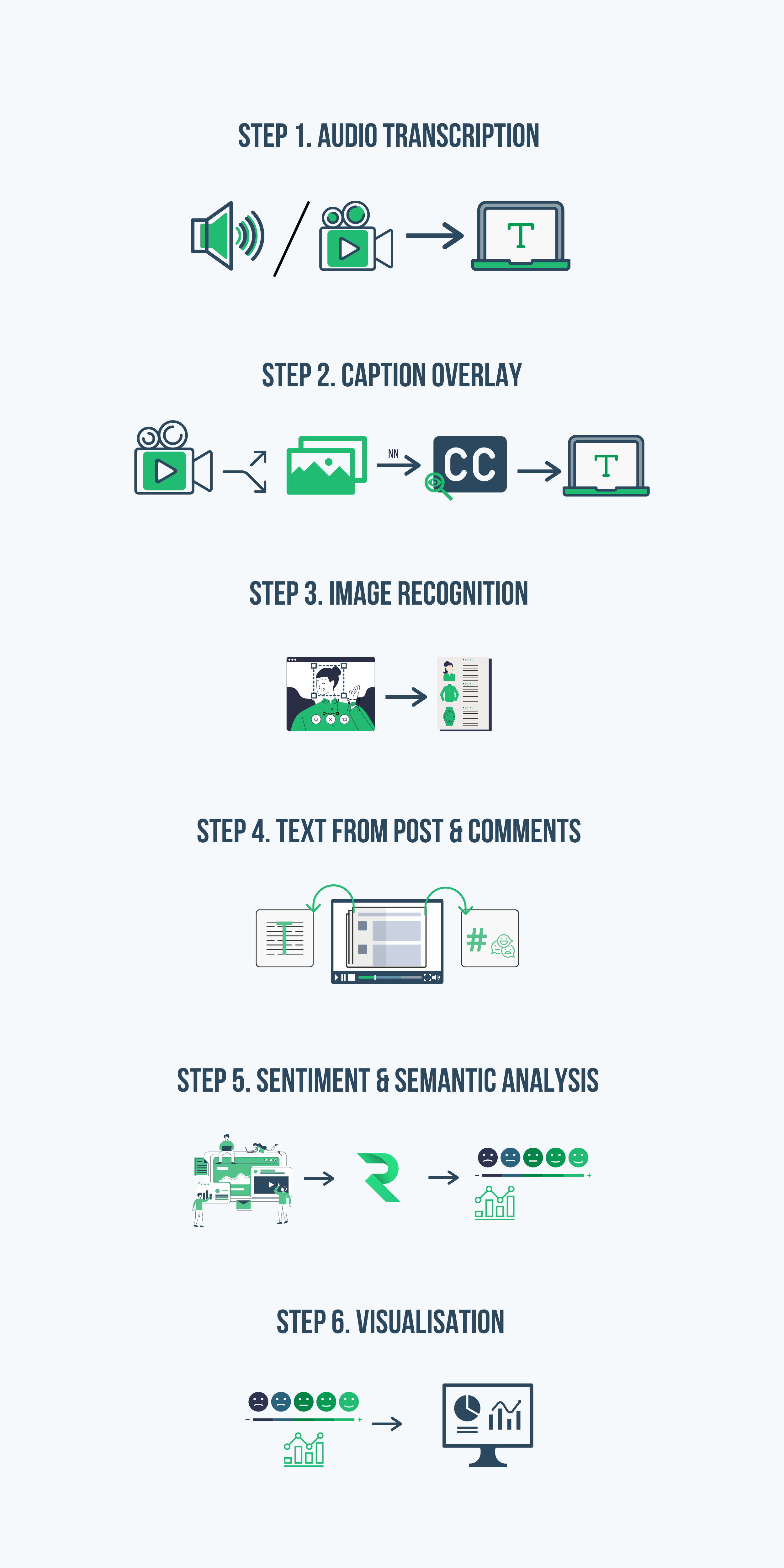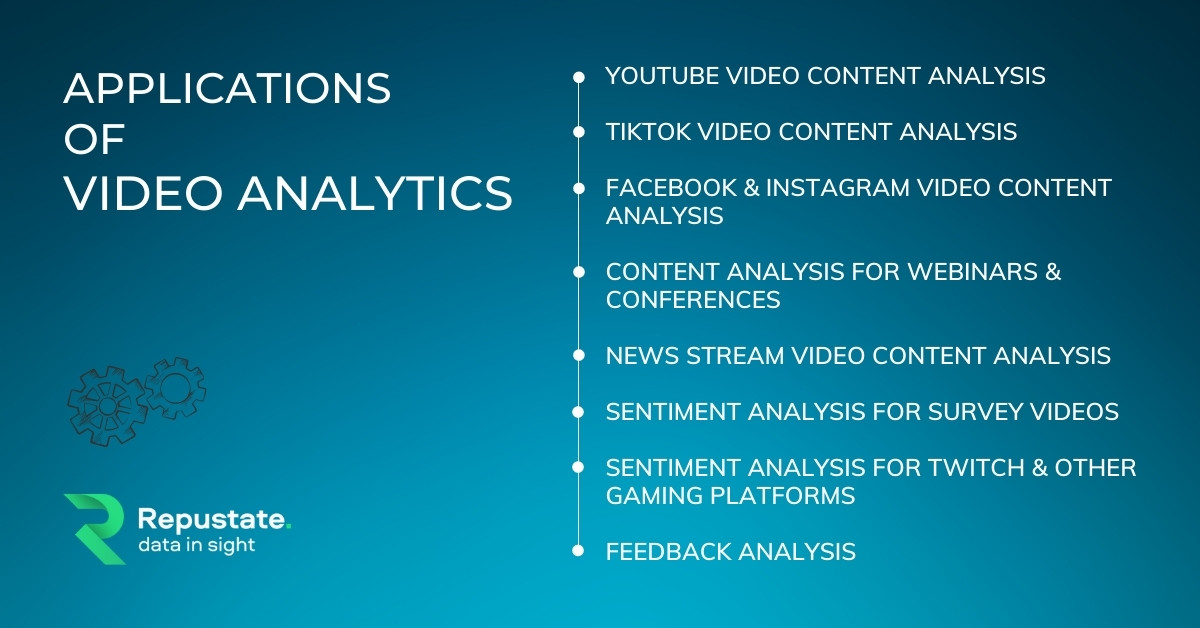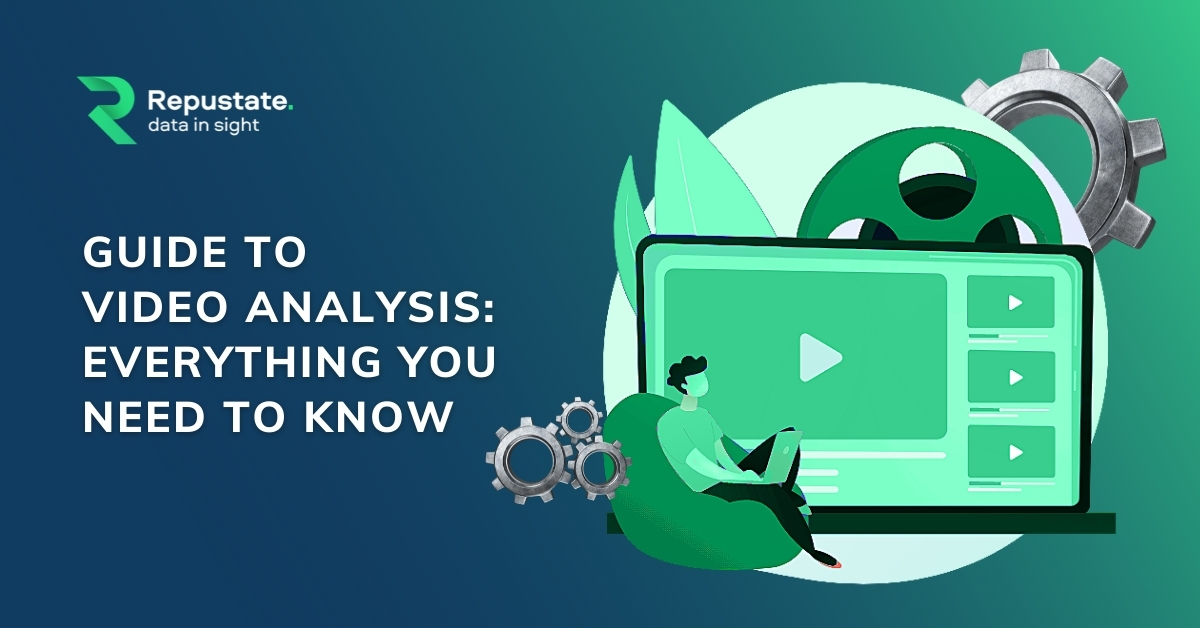The Practical Guide to Video Content Analysis
With ever-increasing video content, the need for video analytics is ardent. In this guide, we give you everything you need to know about video artificial intelligence (video AI). Video marketing content in the news industry, sports and entertainment business, small businesses ventures, have all seen exponential growth in the past years. Studies have shown that videos increase organic traffic to a product website by 157%. The rise of smartphones and user-generated videos, thanks to social media, have also been a great contributor to this phenomenon.
It’s no surprise that 86% of businesses use video as a marketing tool now— up from 63% over the last three years. From advert videos that pop up while you’re watching a youtube video, or when you’re reading news online, video marketing is here to stay because studies and metrics prove that people pay attention to audio-video content more than text. A report showcases that online videos will constitute more than 82% of all consumer internet traffic in 2022 — 15 times higher than it was five years ago. All this has lead to a greatly increased need for video content analysis.
With this practical guide, you will have a better understanding of what semantic video content analysis is, and how it can positively affect business and profit margins. The guide also showcases real-life examples of how companies have employed video analytics for improved efficiency and business performance.
What Is Semantic Video Intelligence?
Semantic video intelligence employs algorithms that recognize similarity and context in video content through machine learning (ML) and extract relevant information and insights that can be used for different purposes to make video data easy to search, discover, and retrieve. Video analytics can thus be used to classify videos through topics, themes, people, motion detection, etcetera, to gather intelligence. Video AI technology thus helps in diverse industries that range from marketing and consumer engagement videos to crowd control to security and surveillance.
Why Is Video AI Critical For Your Business?
Social media advertising and online videos have eclipsed traditional methods of business advertising and static ad displays. Even though television advert ratings experienced a spike fuelled by covid19 pandemic lockdowns, online video viewing is still growing rapidly as consumers continue to migrate online.
Businesses are realizing the value of online videos and their power to reach audiences who are no longer interested in television channels and prefer non-advertising streaming services like Netflix and Prime. Unless television and static advertising models are given a disruptive rethink, this phenomenon is here to stay.
UK-based media planning and data analytics agency, Zenith Media, predicts that online video advertising will be the fastest-growing digital channel rising by 26% to reach US$63 Billion by the end of 2021.
All this information supercharged and available through video content viewing and comments can give deep insights to companies for strategic product and business planning. They can leverage video analytics for three vital roles:
- Social Media Listening
Businesses can discover insights and gain better ROI on advertising spend through social media listening on video-based channels like YouTube, TikTok, and even Facebook, as it aggressively ramps up on user-generated video content.
- Business Intelligence
Through video AI, businesses can extract key information about competitor brands, consumer trends, marketing challenges, and gain customer feedback.
- User-Generated Content
User-generated content plays a very big part in influencing consumer behavior. Consumers are always looking for authenticity in product reviews and that’s why user-generated videos get more views than brand content. Needless to say, video analytics is needed to dig insights from these videos.
How Is Video Content Analysis (VCA) Done?
Video content analysis is conducted in 6 steps. The machine learning solution uses natural language processing (NLP) including text analysis to extract insights from video data. These 6 steps are detailed below.

Step 1. Transcription
Audio and video files are converted into text using speech-to-text software. The model can thus analyze not just videos on social media, but also podcasts and other voice recordings such as doctor notes, dictations, etcetera.
Step 2. Caption overlay
The video analytics algorithms break the video clip down to frame-by-frame image formats and all text in the frames is recognized and extracted.
Step 3. Image recognition
The model recognizes and captures any images in the background thus detecting brand names and logos.
Step 4. Text from post & comments
Posts and comments including hashtags, emojis, and online chat abbreviations related to the videos are ingested and processed using Repustate’s Text analytics API.
Step 5. Sentiment & semantic analysis
Now that the text is extracted, the video analytics engine ensures that sentiment analysis and semantic analysis are conducted to assign emotion scores to the entities and aspects.
Step 6. Data Visualization
All the sentiment scores are shown on a customer sentiment dashboard in easy-to-understand graphs and charts. They can also be filtered per your needs. Semantic video search is another level of analysis that is part of video AI. We detail it below for your understanding.
How is Search Inside Video done?
Semantic video analysis and search is conducted similar to the steps to VCA but here, the model aligns itself to semantic clustering and deep search. The stages of content search inside video can thus be broken into three main stages.

- Stage 1: Videos are converted to text through speech-to-text transcription.
Since these models are unique for each language, they give a transcript of the speech along with the timestamps for each word.
- Stage 2: Text is indexed for a semantic search of the video, section by section.
Thus the video is split into sub-sections based on various criteria like topic, pauses, or speakers. This way there is enough context to disambiguate entities.
- Stage 3: In this step, Deep Search is conducted with the help of timestamps.
It can be done with the help of entities, themes, and topics, along with the associated metadata, Deep Search thus yields matching sections from the source video.
Get more details about how semantic search inside video is conducted.
Business Use Cases of Video Content Analysis
GTD - David Allen Company
The client is the famous time management company Getting Things Done (GTD) created by motivational speaker David Allen. They needed a customized semantic search solution that was capable of processing at least 9 terabytes of data and render over 100,000 pieces of archived content instantly searchable and discoverable. The content was a mix of audio, text, and video files - David Allens’s videos being the most sought after across geographies, including his interviews.
Repustate’s video content analysis (VCA) technology helped the client in managing their video repository, along with organizing and managing their audio and text data. Repustate developed a customized solution for the customer based on their workflow, such that anybody in the organization could access any video files based on any of the themes or topics that were categorized. Semantic video analytics was absolutely essential in this case, as terms have specific meanings and relationships with each other in the GTD methodology.
Appenza Studio & The Ministry of Education, Egypt
Appenza Studio is a specialized software development company that was working on an education mobile app for the Ministry of Education, Egypt. Their app was meant to help students and their parents navigate the Ministry’s education content repository called the Academic Knowledge Bank, composed of videos and text material in Arabic and English. They needed a video analytics solution that could semantically organize the content according to language, themes, topics, speakers, grades, etcetera.
Repustate’s video content analytics solution classified the videos based on subjects and themes specified by the Board of Education. The solution also turned large video archives into new content by semantically classifying and organizing the video bank. In this way, the Ministry was also able to leverage existing archived videos and remodel them for current use. The entire repository of the Egyptian Ministry of Education is now available for search and retrieval in both Arabic and English.Repustate’s solution helped the Ministry understand the need of the Egyptian population and improve the efficacy of its education outreach. And now because of Repustate’s Arabic natural language processing (NLP) model for semantic search and sentiment analysis, the Ministry caters to both its Arabic and English speaking population in a more holistic way.
What Are The Applications Of Video Analytics?
Video analytics helps you in improved product planning, resource optimization, and better delivery of marketing and advertising tactics. Video AI is used widely to this effect by private as well as government organizations for logistics and traffic, crowd control, health and safety, business intelligence, and other important functions. Applications of video analytics include:

1. YouTube video analytics
Consumer feedback from YouTube allows a deep insight into what people feel about your brand, and where your competitors stand compared to you in the public eye. Learn more about YouTube video content analysis.
2. TikTok video analytics
There are 800 million users worldwide and brands recognize the impact of this audience. Video AI allows you a peep into the mind of consumers, which you can use to predict purchase behavior. Read more.
3. Facebook & Instagram video analytics
Facebook is one of the most influential social media channels leading the way for business marketing. Video analytics lets you gather insights by reviewing and analyzing posts and videos for creating holistic marketing and advertising strategies for business development. Read more about Facebook & Instagram Social listening
4. Audio analysis for podcast and webinars
Video analytics is also applied in audio content analysis for podcasts and webinars. These audio files can be arranged and analyzed by topics, speakers, timelines, and themes.
5. Sentiment analysis of news videos
Video AI is applied in news streaming websites and is extremely important in corporate branding, public relations, and online reputation management.
6. Survey video analytics
Video content analysis or survey videos can extract in-depth information from patient voice data, voice of the customer (VoC) data, hospitality reviews, voice of the employee (VoE) data, etcetera.
7. Gaming platforms like Twitch
Video AI can give sentiment analysis scores from niche social media platforms like Twitch and other gaming websites to help brands position their advertising better for gaming apps, tech, workstations, or accessories. Read more.
8. Analysis of sales feedback
Video analytics is excellent for consumer feedback gathered from customers throughout their purchase and after-sales journey and also gives vital information about store location, performance, and other important factors.
Read more about the applications of video analytics
Why Do We Need Video AI?
Video AI is vital in leveraging continuously created video content, whether it is user-generated or lead by business needs. It enables engaging video experiences and intuitive content discovery by recognizing entities like people, places, things, and actions in stored and streaming videos. Video analytics allows you to analyze captions in videos, and analyze comments by extracting rich metadata from the overall video or at shot/frame level. Here are the top eight reasons in more detail.

1. Burgeoning video content
Businesses understand that video content is easier to digest and therefore they are here to stay for good. A Forrester report says that having a video in an email campaign increases the click-through rates (CTR) by 200%. This is the reason why there has been a sudden spike in overall consumer-focused video content.
2. Multilingual needs
Video analytics helps brands with international audiences and multilingual consumers such that you can find insights from voice of the customer (VoC) data regardless of language. Read more.
3. Analyzing caption overlay
Video analytics applications can be used for sentiment analysis through their unique feature of identifying and analyzing caption overlay. This gives you the same advantage as having text data that you can leverage for competitor comparison and respective emotion mapping.
4. Capturing imagery for branded content analysis
Video AI has the unique ability to capture logos and imagery in the background that are categorized as entities and can be analyzed for competitor knowledge and brand insights.
5. Insights from video comments
Social media platforms like Facebook, YouTube, or TikTok are treasure troves of consumer data because they can be harnessed for sentiment analysis pertaining to products (books, makeup, clothing, movies, etc ) or services (taxi, healthcare, spa, hotels, etc).
6. Industry-specific machine models
Video analytics helps companies extract information from videos in a very specific manner. This is key because each industry needs domain-specific semantic clustering for categorizing competitor names, locations, and such. This means a model that analyzes Patient Voice is unique to one that analyzes weather.
7. Video search and retrieval
Video AI enables you to search inside video libraries the same way as text documents. Its algorithms ensure semantic organization and content discovery from your video catalogue even across timestamps and themes.
8. Tagging & Indexing videos
Video analytics allows you to tag, index, and arrange video content so you can filter relevant content according to your need. Video AI is thus tremendously helpful in academia, libraries, video platforms, by removing the need for manual intervention in managing inventory.
Read more about the need for video analytics
Increase Your Video Share With Repustate’s Semantic Video Analytics solution
If you are looking to increase your digital marketing efforts through videos, whether developing your own product videos or analyzing video content on social media to understand your consumers, you need strategic insights. Repustate has been helping clients across industry verticals and countries understand video data to find hidden insights that can drive business intelligence.
Repustate’s powerful analysis video content (VCA) solution has the ability to scale and enable powerful content search and discovery. It natively understands 23 different languages, which means it does not rely on translations, thus giving accurate results quickly and simply.
Our video content analytics and video search solution is available as an API and as an on-premise installation.
 Home
Home
 Aug 11, 2021
Aug 11, 2021

 Jeremy Wemple
Jeremy Wemple
 Dr. Ayman Abdelazem
Dr. Ayman Abdelazem
 Dr. Salah Alnajem, PhD
Dr. Salah Alnajem, PhD
 David Allen
David Allen

 Repustate Team
Repustate Team

